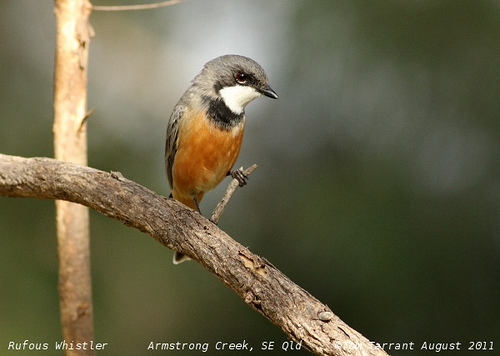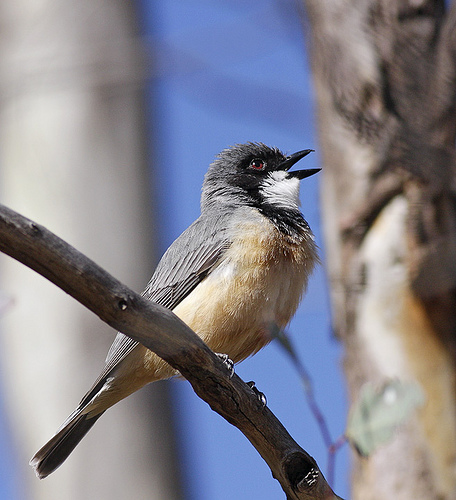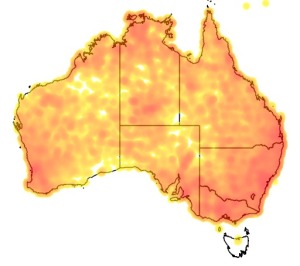Colours
Distinguishing features
They are large-headed and stocky. They have short beaks and long tails (almost as long as the rest of the bird) which are very narrow and have sharp, forked tips. The species is sexually dimorphic. While females are typically dull brown or grey with streaked underbodies, males are predominantly dark-grey with white throats and (in most cases) a black mask that covers most of their head and some of their neck. (Wikipedia)
Size
- From 16 cm to 18 cm (Length of specimen)
Wingspan
- Wingspan data is not yet available.
Synonyms
Distribution
Distribution and habitat preferences
It is found in New Caledonia, Papua New Guinea, and throughout Australia.
Itis typically found in forested areas, woodland and shrubland, but also in gardens and farmland. It migrates seasonally, moving south in the spring and north in the autumn. In New Caledonia the species does not undertake migrations but is instead resident in areas of open forest and savannah. (Wikipedia)
Diet
While they primarily feed on insects, they also eat seeds, fruit and occasionally, leaves and grasses. They never forage for food on the ground, which is unusual for whistlers, which typically do not forage at particularly high levels. (Wikipedia)





